
Medellín: The City of Eternal Spring
Discover Medellín, Colombia's City of Eternal Spring, renowned for its perfect weather, innovative urban design, vibrant culture, and scenic natural beauty.
Nestled in the Aburrá Valley and surrounded by majestic Andes mountains, Medellín is a vibrant city known for its perfect weather, innovative spirit, and rich cultural heritage. Often called the 'City of Eternal Spring' due to its mild climate, Medellín offers a unique blend of urban sophistication and scenic beauty that captivates every visitor. Medellín’s transformation from a troubled past to a beacon of modernity is nothing short of remarkable. The city boasts an efficient public transportation system, including the famous Metrocable, which provides stunning views of the valley and connects visitors to various attractions. The downtown area, with its bustling markets, historic churches, and the iconic Plaza Botero, where you can admire the oversized sculptures by Fernando Botero, is a must-visit. Nature lovers will enjoy exploring the lush Jardín Botánico and Parque Arví, a vast ecological nature reserve that offers hiking, picnicking, and bird-watching opportunities. The annual Feria de las Flores (Flower Festival) is another highlight, transforming the city into a colorful spectacle with parades, music, and cultural events celebrating the region's floriculture. Medellín’s culinary scene is equally impressive, with a wide range of dining options from traditional Colombian dishes to international cuisine. Don’t miss trying the local favorite, Bandeja Paisa, a hearty platter featuring beans, rice, meat, avocado, and plantain. The city's nightlife is vibrant, with numerous bars, clubs, and live music venues that stay lively until the early morning hours.
Local tips in Medellín
- Use the Metrocable for both transportation and panoramic views of the city.
- Visit Plaza Botero early in the morning to avoid crowds and enjoy the sculptures.
- Take a guided tour of Comuna 13 to learn about Medellín's history and see amazing street art.
- Try the local food at Mercado del Río, a trendy food market with diverse culinary options.
- Be aware of the weather; even with mild temperatures, sudden rain showers can occur, so carry a light rain jacket.
Neighbourhoods in Medellín
Medellín: The City of Eternal Spring
Nestled in the Aburrá Valley and surrounded by majestic Andes mountains, Medellín is a vibrant city known for its perfect weather, innovative spirit, and rich cultural heritage. Often called the 'City of Eternal Spring' due to its mild climate, Medellín offers a unique blend of urban sophistication and scenic beauty that captivates every visitor. Medellín’s transformation from a troubled past to a beacon of modernity is nothing short of remarkable. The city boasts an efficient public transportation system, including the famous Metrocable, which provides stunning views of the valley and connects visitors to various attractions. The downtown area, with its bustling markets, historic churches, and the iconic Plaza Botero, where you can admire the oversized sculptures by Fernando Botero, is a must-visit. Nature lovers will enjoy exploring the lush Jardín Botánico and Parque Arví, a vast ecological nature reserve that offers hiking, picnicking, and bird-watching opportunities. The annual Feria de las Flores (Flower Festival) is another highlight, transforming the city into a colorful spectacle with parades, music, and cultural events celebrating the region's floriculture. Medellín’s culinary scene is equally impressive, with a wide range of dining options from traditional Colombian dishes to international cuisine. Don’t miss trying the local favorite, Bandeja Paisa, a hearty platter featuring beans, rice, meat, avocado, and plantain. The city's nightlife is vibrant, with numerous bars, clubs, and live music venues that stay lively until the early morning hours.
When is the best time to go to Medellín?
Iconic landmarks you can’t miss
Pueblito Paisa
Explore Pueblito Paisa, a captivating replica of an Antioquian village with stunning views, vibrant culture, and a taste of Colombia's rich heritage.
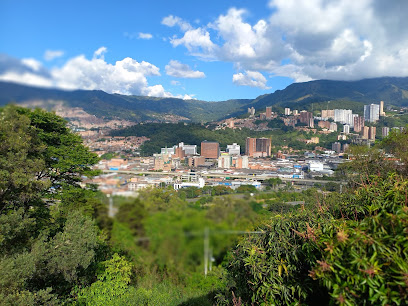
Jardín Botánico de Medellín
Discover the serene beauty of Jardín Botánico de Medellín, a lush botanical garden showcasing Colombia's rich biodiversity and vibrant plant life.
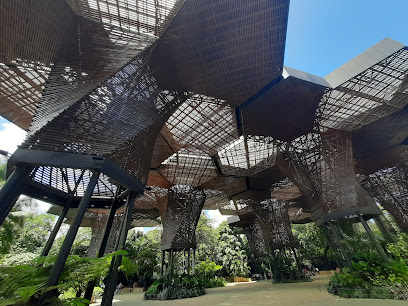
Comuna 13
Experience the vibrant culture and rich history of Comuna 13 in Medellín, where art meets resilience in a stunning urban landscape.
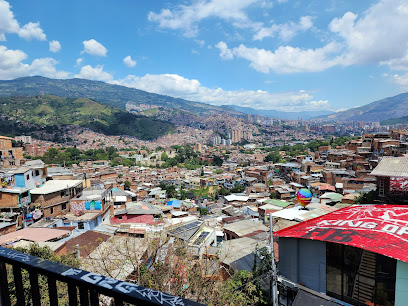
Plaza Botero - Medellín, Antioquia
Discover the artistic legacy of Fernando Botero at Plaza Botero, Medellín's vibrant hub of oversized sculptures and rich cultural experiences.

Parque de El Poblado
Explore the beauty of Parque de El Poblado, Medellín's urban oasis filled with nature, culture, and relaxation for every traveler.

Parque Berrío
Discover Parque Berrío, Medellín's vibrant city park that blends culture, relaxation, and beautiful surroundings in the heart of La Candelaria.
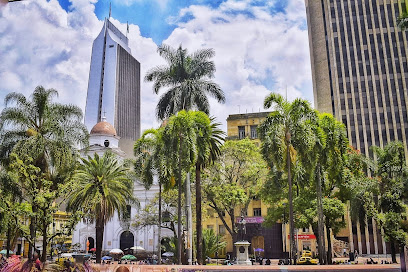
Parque Arví
Discover the serene beauty of Parque Arví, an ecological park near Medellín, Colombia, perfect for hiking, biking, and experiencing nature's tranquility.

Lleras Park
Discover Lleras Park, a vibrant urban space in El Poblado, Medellín, where nature meets nightlife, offering a unique blend of relaxation and excitement.
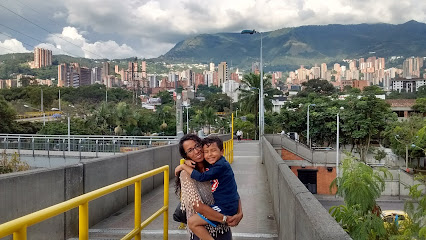
Parque de los Pies Descalzos
Experience the serene beauty and cultural vibrancy of Parque de los Pies Descalzos, a must-visit urban park in Medellín, Colombia.
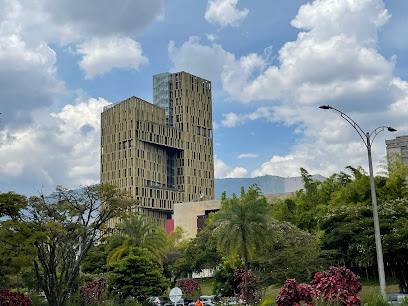
Parque de la Conservación
Discover the ecological beauty of Parque de la Conservación in Medellín, a haven for native flora and fauna that captivates nature lovers and tourists alike.
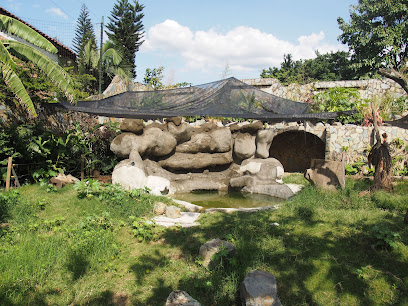
El Castillo Museum and Gardens
Explore the enchanting El Castillo Museum and Gardens in Medellín, where history meets natural beauty in a stunning castle setting.

San Antonio Park
Explore San Antonio Park in Medellín - a lively plaza filled with art, culture, and the spirit of the city. Perfect for relaxation and local experiences.

Parque de Bolívar
Experience the tranquil beauty of Parque de Bolívar, a vibrant city park in Medellín filled with history, nature, and local culture.
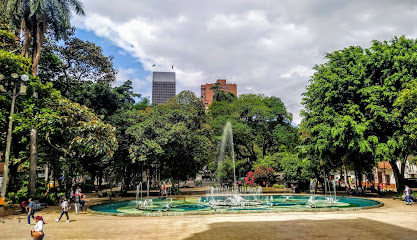
Museum of Antioquia
Explore the Museum of Antioquia, where art and culture intertwine in the heart of Medellín—featuring iconic works by Fernando Botero.
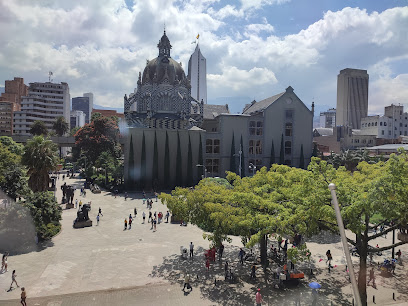
Ciudad del Río Lineal Park
Explore Ciudad del Río Lineal Park, Medellín's urban oasis, where art meets nature in a vibrant setting perfect for relaxation and cultural experiences.

Unmissable attractions to see
Pueblito Paisa
Explore the stunning Pueblito Paisa in Medellín, a cultural treasure with breathtaking views, vibrant local life, and delightful traditional cuisine.
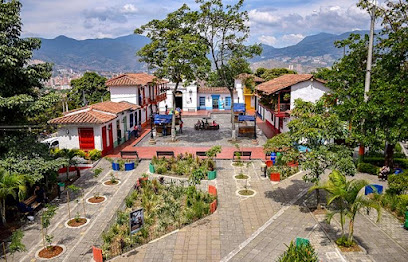
Sabaneta Park
Explore the lush landscapes and vibrant culture of Sabaneta Park, a must-visit urban oasis in Antioquia offering recreation and relaxation.

Jardín Botánico de Medellín
Discover the stunning beauty of Jardín Botánico de Medellín, a serene oasis filled with diverse plant life and engaging exhibits for all ages.
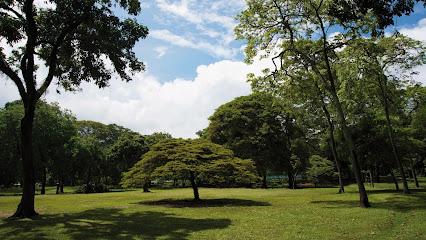
Atanasio Girardot Stadium
Experience the vibrant sports culture of Medellín at Atanasio Girardot Stadium, home to thrilling matches and unforgettable events.

Parque Explora
Explore the wonders of science and marine life at Parque Explora, a captivating destination in Medellín, Colombia for all ages!

Comuna 13
Explore Comuna 13, Medellín: A vibrant neighborhood showcasing street art, culture, and resilience in the heart of Colombia.

Plaza Botero - Medellín, Antioquia
Explore Plaza Botero in Medellín, home to striking sculptures by Fernando Botero and a vibrant cultural scene in a historic setting.

Parques del Río
Discover the tranquil beauty of Parques del Río in Medellín, a lush urban park perfect for relaxation, culture, and nature exploration.

Parque Berrío
Discover the cultural heart of Medellín at Parque Berrío, a vibrant city park filled with art, history, and natural beauty.

Parque Norte
Discover the thrill of rides and the beauty of nature at Parque Norte, Medellín's premier theme park for family fun and ecological exploration.
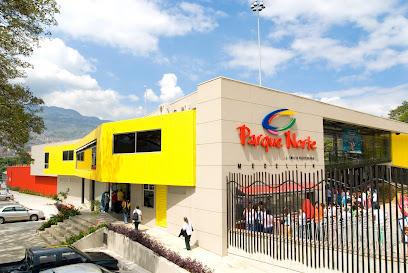
Parque Arví
Explore the serene landscapes of Parque Arví, an ecological paradise near Medellín, perfect for adventure seekers and nature lovers alike.

Parque de los Deseos
Explore Parque de los Deseos in Medellín: a vibrant city park blending nature, culture, and community activities for an unforgettable experience.

Parque de los Pies Descalzos
Experience the serene beauty and cultural richness of Parque de los Pies Descalzos, a tranquil urban park in the heart of Medellín, Colombia.

Plazoleta de Los Zócalos
Explore the colorful Plazoleta de Los Zócalos in Guatapé, where vibrant art meets the heart of Colombian culture amidst stunning scenery.

Parque de la Conservación
Immerse yourself in nature at Parque de la Conservación, an ecological sanctuary in Medellín showcasing Colombia's rich biodiversity and wildlife conservation.
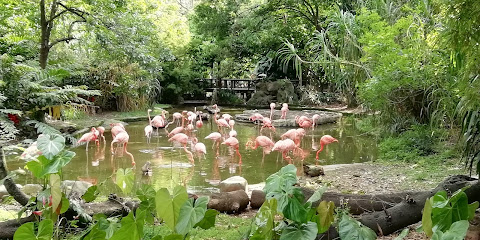
Essential places to dine
Restaurante Mondongo's El Poblado
Discover the heart of Colombian cuisine at Restaurante Mondongo's El Poblado – where tradition meets taste in every bite.

Restaurante La Matriarca
Experience the heart of Colombian culture at Restaurante La Matriarca – where traditional flavors meet modern dining in Medellín's El Poblado.

Restaurante Hatoviejo
Discover the authentic flavors of Colombia at Restaurante Hatoviejo, where vibrant ambiance meets exceptional cuisine in Medellín.
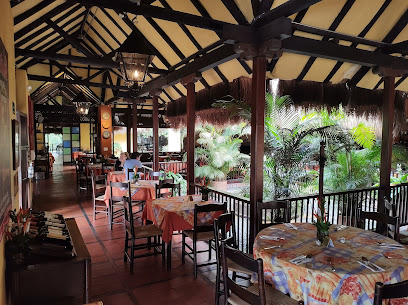
Alambique
Experience authentic Colombian cuisine at Alambique in Medellín's El Poblado – where tradition meets modern culinary artistry.

37 Park Medellín | Restaurante Bar
Experience delectable grilled cuisine in a vibrant setting at 37 Park Medellín – where every meal is a celebration of flavor.
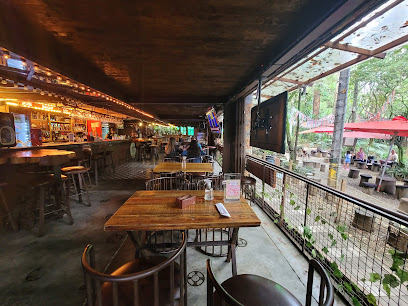
La Tienda de la 70
Experience authentic Colombian cuisine at La Tienda de la 70 in Medellín - where tradition meets flavor in every dish.
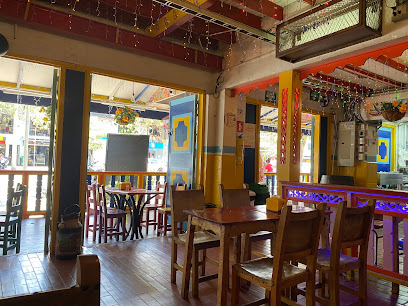
Hacienda - Junín
Discover the essence of Colombian cuisine at Hacienda - Junín in Medellín's historic La Candelaria district.
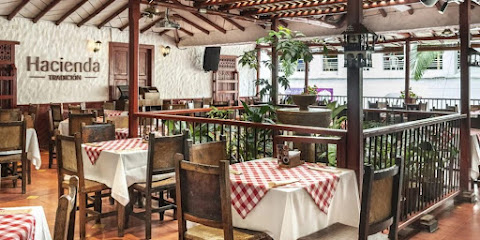
Malanga del trópico
Discover authentic Colombian cuisine at Malanga del Trópico in Medellín's lively Laureles district, where every dish tells a story.
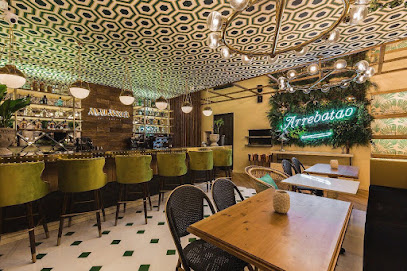
Tabún
Discover Tabún: A culinary oasis in Medellín offering authentic Colombian flavors amidst a vibrant atmosphere.
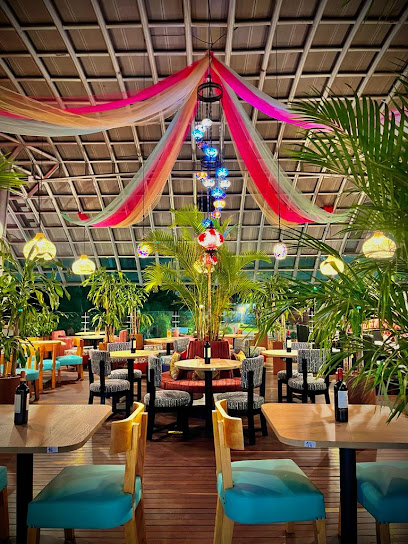
Bonhomía
Discover Bonhomía in El Poblado: A Culinary Delight Offering Innovative Colombian Cuisine Amidst a Warm Atmosphere.
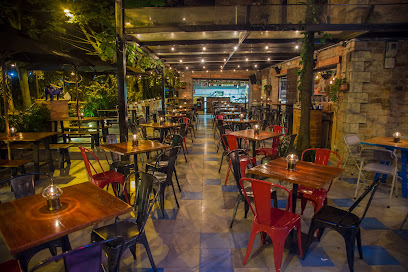
Rocoto
Experience the vibrant tastes of Peru at Rocoto in Medellín's El Poblado - a must-visit for culinary enthusiasts seeking authentic flavors.
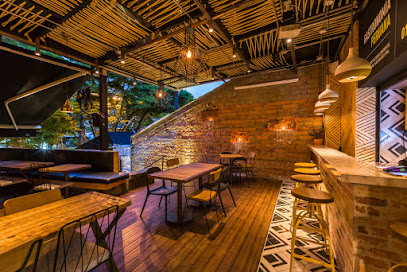
Angus Brangus Parrilla Bar
Discover culinary excellence at Angus Brangus Parrilla Bar in Medellín - where Spanish flavors meet local charm for an unforgettable dining experience.
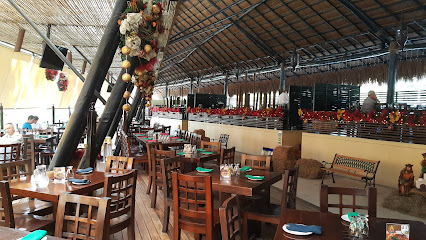
San Felipe Picnic y Asados
Experience authentic Colombian flavors at San Felipe Picnic y Asados in Medellín – where every meal tells a story.
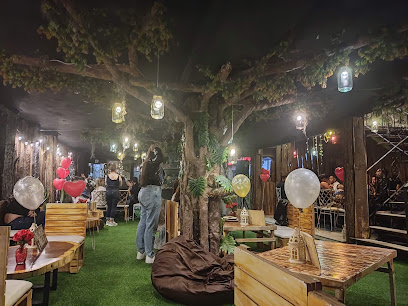
Mystic Restaurante
Discover the essence of Colombian cuisine at Mystic Restaurante in Medellín - where every dish is crafted with passion and authenticity.
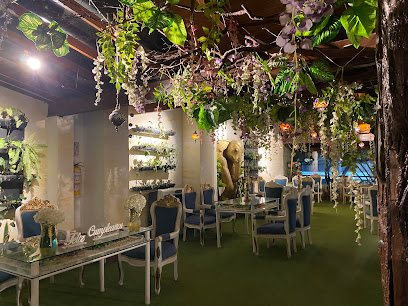
Carmen
Discover the exquisite flavors of Colombian cuisine at Carmen in Medellín's vibrant El Poblado district.

Markets, malls and hidden boutiques
Centro Comercial Premium Plaza
Explore the vibrant Centro Comercial Premium Plaza in Medellín for an unforgettable shopping and dining experience, blending local culture with modern retail.

Oviedo
Discover the vibrant shopping and dining experience at Oviedo, a premier mall in El Poblado, Medellín offering something for everyone.

Sandiego Mall
Discover the vibrant Sandiego Mall in Medellín, a perfect blend of shopping, dining, and entertainment that showcases the local culture.
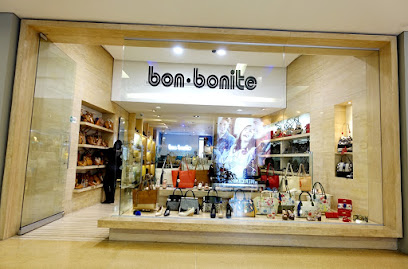
Florida Parque Comercial
Explore Florida Parque Comercial in Medellín, where shopping meets entertainment in a vibrant Colombian atmosphere.
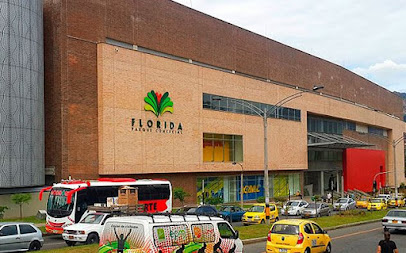
El Tesoro Parque Comercial
Discover the ultimate shopping destination in Medellín at El Tesoro Parque Comercial, where style meets culture and culinary delights await.

Unicentro Shopping Mall
Experience shopping, dining, and local culture at Unicentro Shopping Mall in Medellín, where every visit is a new adventure.
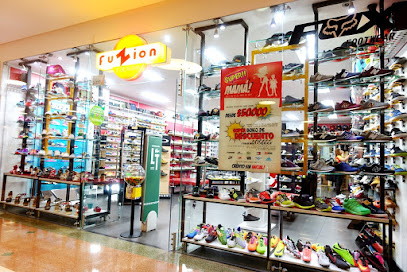
Éxito San Antonio
Discover the diverse offerings of Éxito San Antonio, the ultimate shopping experience in Medellín, featuring fresh produce, fashion, and more.
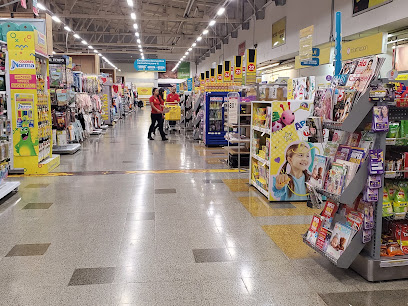
Arkadia Shopping Center
Discover the vibrant Arkadia Shopping Center in Medellín, a premier destination for shopping, dining, and entertainment for tourists and locals alike.
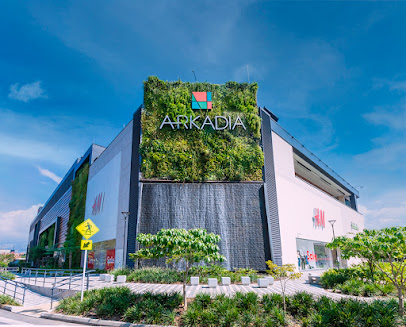
Centro Comercial Aventura
Discover shopping, dining, and entertainment at Centro Comercial Aventura, the vibrant shopping mall in Medellín that has something for everyone.
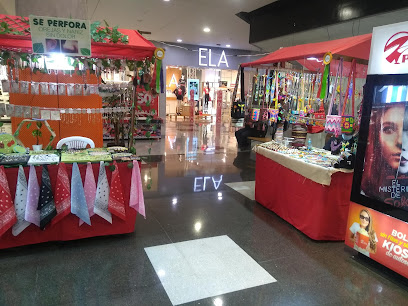
National Palace Mall
Discover the National Palace Mall in Medellín, a vibrant shopping destination with a rich variety of clothing and local culture.

Santafé Mall
Explore Santafé Mall in Medellín for an unforgettable shopping and dining experience amidst a vibrant atmosphere.

El Hueco
Explore El Hueco, Medellín's vibrant shopping mall, offering unbeatable prices and a rich cultural experience in the heart of the city.
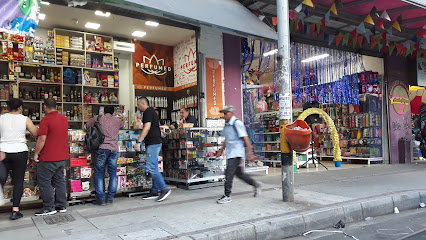
El Diamante
Explore El Diamante, Medellín's premier shopping mall, offering diverse retail, dining, and entertainment experiences in a vibrant atmosphere.
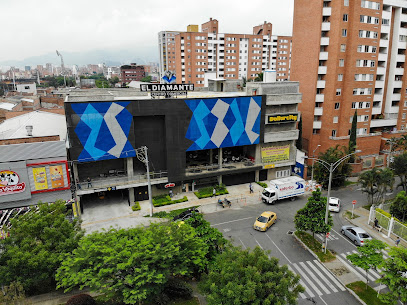
Centro Comercial el Hueco Número Uno.
Discover a vibrant shopping experience at Centro Comercial el Hueco Número Uno, featuring an array of stores from perfumes to toys in Medellín.
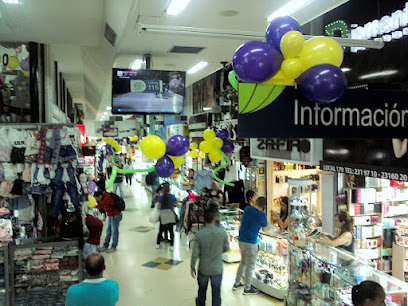
Books and Culture Mall
Explore the Books and Culture Mall in Medellín - a vibrant hub for literature, vinyl, and local artistry in the heart of La Candelaria.
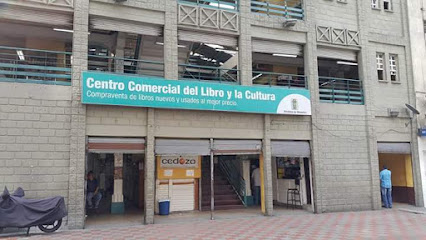
Essential bars & hidden hideouts
La Octava Bar
Discover the vibrant nightlife of Medellín at La Octava Bar, where eclectic music and delicious drinks create an unforgettable experience.

Trilogia Bar
Experience the vibrant nightlife at Trilogia Bar, Medellín's premier destination for innovative cocktails and lively entertainment in El Poblado.
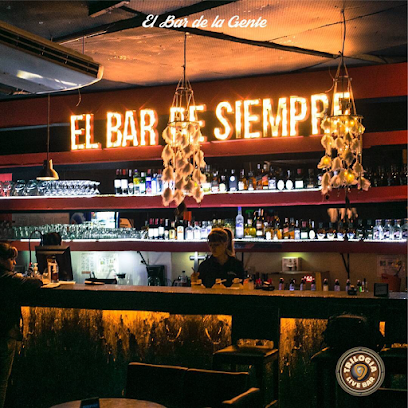
Son Havana Bar
Discover the heart of salsa dancing at Son Havana Bar in Medellín, where vibrant rhythms and lively nights come together for an unforgettable experience.

Del Patio Bar
Del Patio Bar in Medellín: Experience the perfect blend of vibrant atmosphere and mouthwatering Colombian grill cuisine.

Vintrash
Experience the vibrant nightlife at Vintrash, a must-visit bar and disco club in El Poblado, Medellín, offering creative cocktails and a lively atmosphere.

Envy Rooftop
Elevate your nightlife in Medellín at Envy Rooftop, where stunning views and expertly crafted cocktails meet in a vibrant atmosphere.
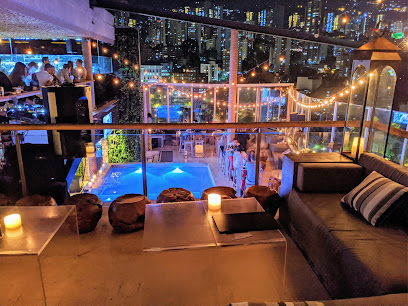
The Blue Bar
Discover the vibrant nightlife at The Blue Bar in El Poblado, Medellín, where eclectic cocktails and a lively atmosphere await.
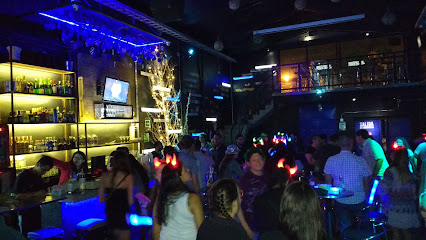
BERLIN BAR 1930
Discover the vibrant nightlife at Berlin Bar 1930 in Medellín - where eclectic cocktails meet a lively ambiance.
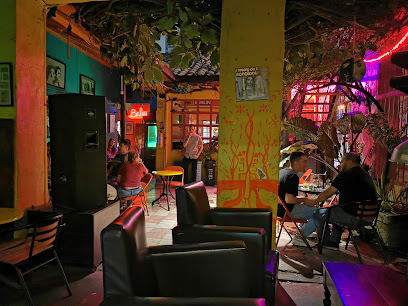
Mosquito Rooftop
Discover the vibrant nightlife and exquisite dining at Mosquito Rooftop, a stunning bar and restaurant with breathtaking views in Medellín.

La House Provenza
Discover the heartbeat of Medellín's nightlife at La House Provenza, a bar and nightclub that promises unforgettable evenings filled with music, dance, and camaraderie.

Donde Aquellos Bar
Discover the lively atmosphere of Donde Aquellos Bar in Medellín, where great drinks, delicious food, and unforgettable nights await you.

Chupitos Medellin | Bar Parque Lleras
Experience the vibrant nightlife of Medellín at Chupitos, El Poblado's premier bar known for its creative shots and lively atmosphere.

Panorama Rooftop Bar
Experience breathtaking views and a vibrant atmosphere at Panorama Rooftop Bar, the perfect spot for cocktails in Medellín's El Poblado.
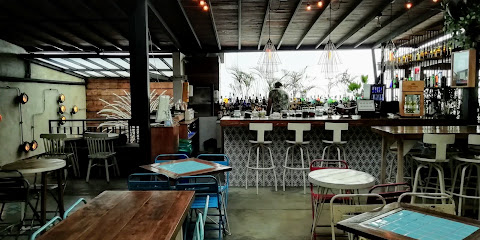
Alta Gracia
Experience the best of Colombian grilling at Alta Gracia, a must-visit culinary destination in Medellín's El Poblado neighborhood, where flavors and hospitality shine.
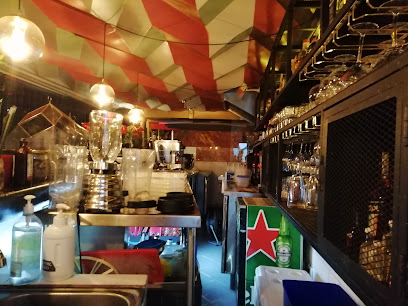
ZIRUMA TIKI BAR
Discover the tropical charm of Ziruma Tiki Bar in Medellín's El Poblado, where exotic cocktails and a lively atmosphere await every visitor.
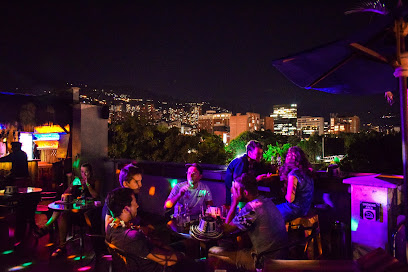
Local Phrases
-
- HelloHola
[oh-lah] - GoodbyeAdiós
[ah-dee-ohs] - YesSí
[see] - NoNo
[noh] - Please/You're welcomePor favor/De nada
[por fah-bor/deh nah-dah] - Thank youGracias
[grah-see-ahs] - Excuse me/SorryPerdón
[pair-dohn] - How are you?¿Cómo estás?
[koh-moh ehs-tahs] - Fine. And you?Bien. ¿Y tú?
[byen. ee too] - Do you speak English?¿Hablas inglés?
[ah-blahs een-glays] - I don't understandNo entiendo
[noh ehn-tyen-doh]
- HelloHola
-
- I'd like to see the menu, pleaseMe gustaría ver el menú, por favor
[meh goos-tah-ree-ah vehr ehl meh-noo, por fah-bor] - I don't eat meatNo como carne
[noh koh-moh kahr-neh] - Cheers!¡Salud!
[sah-lood] - I would like to pay, pleaseMe gustaría pagar, por favor
[meh goos-tah-ree-ah pah-gar, por fah-bor]
- I'd like to see the menu, pleaseMe gustaría ver el menú, por favor
-
- Help!¡Ayuda!
[ah-yoo-dah] - Go away!¡Vete!
[veh-teh] - Call the Police!¡Llama a la Policía!
[yah-mah ah lah poh-lee-see-ah] - Call a doctor!¡Llama a un médico!
[yah-mah ah oon meh-dee-koh] - I'm lostEstoy perdido
[ehs-toy pair-dee-doh] - I'm illEstoy enfermo
[ehs-toy ehn-fehr-moh]
- Help!¡Ayuda!
-
- I'd like to buy...Me gustaría comprar...
[meh goos-tah-ree-ah kohm-prar] - I'm just lookingSólo estoy mirando
[soh-loh ehs-toy mee-rahn-doh] - How much is it?¿Cuánto cuesta?
[kwahn-toh kwehs-tah] - That's too expensiveEso es muy caro
[eh-soh ehs mwee kah-roh] - Can you lower the price?¿Puedes rebajar el precio?
[pweh-dehs reh-bah-har ehl pree-syoh]
- I'd like to buy...Me gustaría comprar...
-
- What time is it?¿Qué hora es?
[keh oh-rah ehs] - It's one o'clockEs la una
[ehs lah oo-nah] - Half past (10)Y media (10)
[ee meh-dee-ah (deez)] - MorningMañana
[mah-nyah-nah] - AfternoonTarde
[tahr-deh] - EveningNoche
[noh-cheh] - YesterdayAyer
[ah-yehr] - TodayHoy
[oy] - TomorrowMañana
[mah-nyah-nah] - 1Uno
[oo-noh] - 2Dos
[dohs] - 3Tres
[trehs] - 4Cuatro
[kwah-troh] - 5Cinco
[seen-koh] - 6Seis
[says] - 7Siete
[syeh-teh] - 8Ocho
[oh-choh] - 9Nueve
[nweh-veh] - 10Diez
[dyehs]
- What time is it?¿Qué hora es?
-
- Where's a/the...?¿Dónde está...?
[dohn-deh ehs-tah] - What's the address?¿Cuál es la dirección?
[kwahl ehs lah dee-rehk-syon] - Can you show me (on the map)?¿Puedes mostrarme (en el mapa)?
[pweh-dehs mohs-trar-meh (ehn ehl mah-pah)] - When's the next (bus)?¿Cuándo es el próximo (bus)?
[kwan-doh ehs ehl proh-ksee-moh (boos)] - A ticket (to ....)Un tiquete (para ....)
[oon tee-keh-teh (pah-rah)]
- Where's a/the...?¿Dónde está...?
History of Medellín
-
Medellín was founded on November 2, 1616, by Francisco Herrera Campuzano. Initially named 'San Lorenzo de Aburrá,' the settlement was established in the Aburrá Valley, which was initially inhabited by the indigenous Aburrá people. Over the years, the city grew from a small village to a significant colonial town.
-
In the 19th century, Medellín experienced rapid growth due to the coffee boom. The establishment of the Antioquia Railway in 1874 facilitated the transport of coffee to international markets, bolstering the city’s economy. During this period, Medellín emerged as an industrial hub, with textile factories and other industries flourishing.
-
The late 20th century saw Medellín become infamously associated with the drug trade, particularly the Medellín Cartel led by Pablo Escobar. Throughout the 1980s and early 1990s, the city experienced severe violence and instability. Escobar's death in 1993 marked the beginning of a significant decline in cartel-related violence.
-
In the early 21st century, Medellín underwent a remarkable urban transformation. Initiatives such as the construction of the Metrocable system in 2004 and the establishment of the Medellín Metro revitalized the city. Projects like the 'Library Parks' and 'Escaleras Electricas' in Comuna 13 showcased innovative urban planning aimed at social inclusion and reducing crime.
-
Medellín has also seen a cultural renaissance, becoming a vibrant center of art, music, and education. The city is home to events like the annual Flower Festival (Feria de las Flores), which celebrates the region's floriculture with parades and displays. Institutions such as the Museum of Antioquia and the Medellín Philharmonic Orchestra highlight the city's commitment to cultural enrichment.
Medellín Essentials
-
Medellín is served by José María Córdova International Airport (MDE) located in Rionegro, roughly 35 kilometers from the city center. The airport handles international and domestic flights. For a more budget-friendly option, travelers can also fly into Olaya Herrera Airport (EOH), which mainly serves domestic routes. From José María Córdova International Airport, you can take a taxi, an airport shuttle, or a bus to Medellín. The journey typically takes around 45 minutes to 1 hour by road.
-
Medellín boasts a modern and efficient public transportation system. The Metro system, including metro trains, metro buses, and the Metrocable, covers most parts of the city. The metro is clean, safe, and affordable. Taxis and ride-hailing services like Uber are also widely available. For a local experience, you can hop on a buseta (local bus). Renting a car is an option but navigating the city’s traffic can be challenging for newcomers.
-
The official currency in Colombia is the Colombian Peso (COP). Credit and debit cards are widely accepted in Medellín, especially in hotels, restaurants, and shops. However, it is advisable to carry some cash for smaller establishments and street vendors. ATMs are plentiful and can be found in shopping centers, banks, and other convenient locations. Be mindful of transaction fees that may apply when using foreign cards.
-
Medellín has made significant strides in improving safety, but it’s still important to take precautions. Areas like El Poblado and Laureles are generally safe for tourists. However, neighborhoods such as La Sierra, Comuna 13, and some parts of downtown can have higher crime rates and should be visited with caution or accompanied by a local guide. Always be vigilant, particularly at night, and avoid displaying valuables.
-
In case of an emergency, dial 123 for immediate assistance. Medellín has several hospitals and clinics that provide quality medical care. It’s advisable to have travel insurance that covers medical emergencies. Pharmacies, known as 'droguerías,' are widely available for minor health issues and over-the-counter medications.
-
Fashion: Do dress casually but neatly. Medellín is known for its fashion-conscious residents. Avoid wearing overly flashy jewelry. Religion: Do respect local religious customs. While Medellín is predominantly Catholic, always be respectful when visiting churches or religious sites. Public Transport: Do use the Metro as it is clean and reliable. Don’t eat or drink on public transport. Greetings: Do greet people with a handshake or a hug if you know them well. It’s customary to use formal titles like 'Señor' or 'Señora.' Eating & Drinking: Do try local foods such as arepas and bandeja paisa. Don’t refuse hospitality as it can be considered impolite.
-
To experience Medellín like a local, visit the local markets such as Plaza Minorista and Plaza de la América. Enjoy a game of Tejo, a traditional Colombian sport, or take a stroll in the botanical gardens. Make sure to explore the city’s vibrant street art in Comuna 13 and take a ride on the Metrocable for stunning views of the city. Don’t miss trying local coffee at one of the many coffee shops; Medellín prides itself on its exceptional coffee.
Trending Landmark in Medellín
-
Pueblito Paisa
-
Jardín Botánico de Medellín
-
Comuna 13
-
Plaza Botero - Medellín, Antioquia
-
Parque de El Poblado
-
Parque Berrío
-
Parque Arví
-
Lleras Park
-
Parque de los Pies Descalzos
-
Parque de la Conservación
-
El Castillo Museum and Gardens
-
San Antonio Park
-
Parque de Bolívar
-
Museum of Antioquia
-
Ciudad del Río Lineal Park
Nearby Cities to Medellín
-
Things To Do in Manizales
-
Things To Do in Pereira
-
Things To Do in Armenia
-
Things To Do in Ibagué
-
Things To Do in Bogotá
-
Things To Do in Tunja
-
Things To Do in Villavicencio
-
Things To Do in Cali
-
Things To Do in Sincelejo
-
Things To Do in Neiva
-
Things To Do in Cúcuta
-
Things To Do in Popayán
-
Things To Do in Cartagena
-
Things To Do in San Blas Islands
-
Things To Do in Panama City















